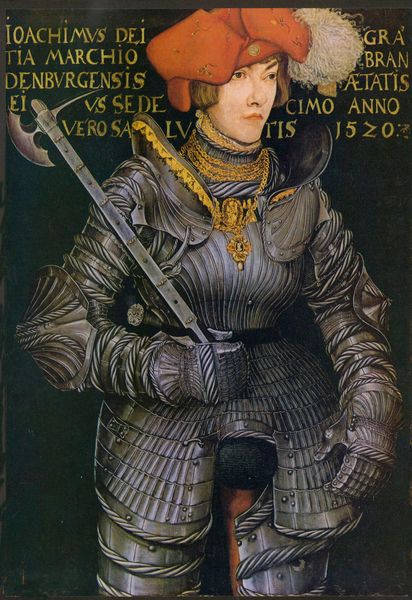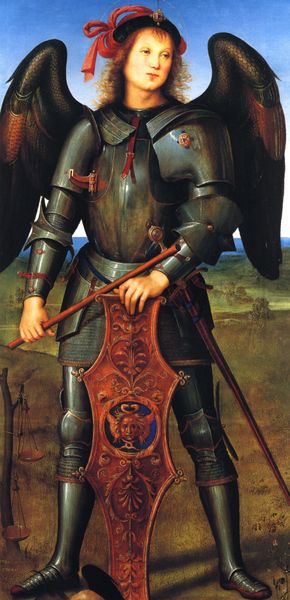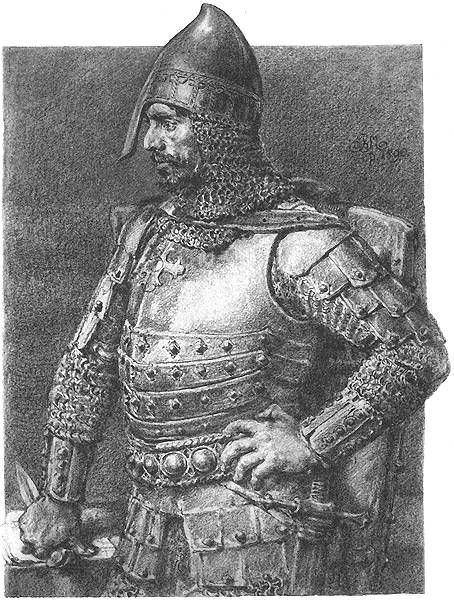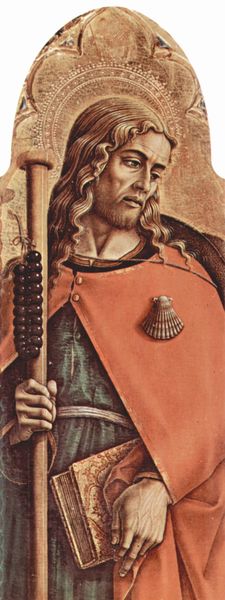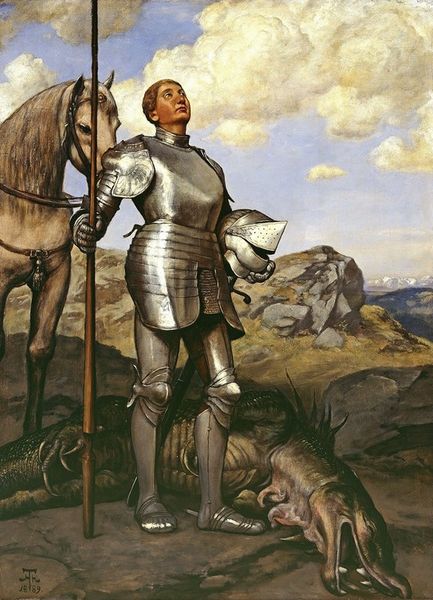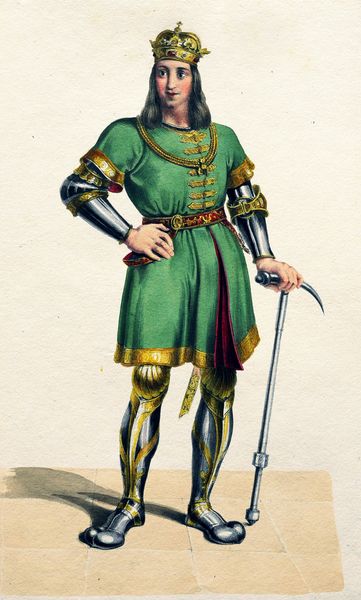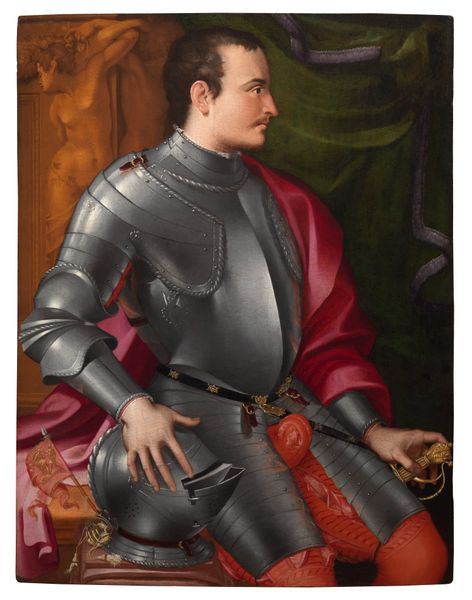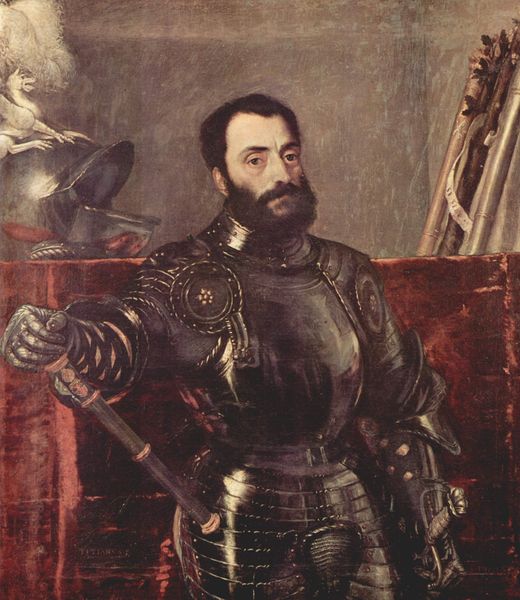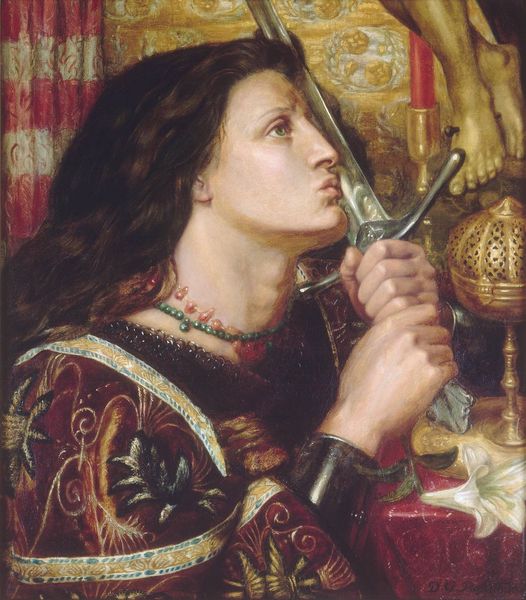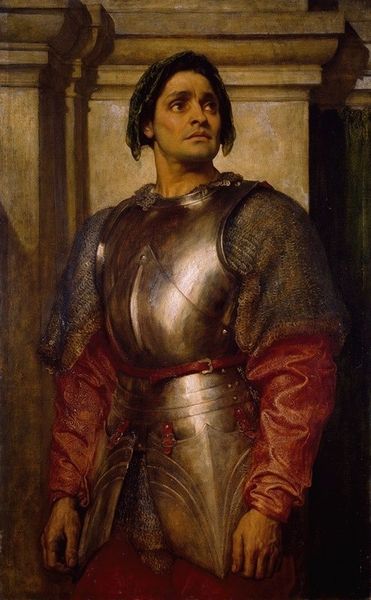
painting, oil-paint
#
painting
#
oil-paint
#
oil painting
#
history-painting
#
pre-raphaelites
#
academic-art
Copyright: Public domain
Curator: The steely gaze, the weight of the armour... It evokes a sense of melancholy stoicism. Editor: Indeed. What you’re seeing is Eleanor Fortescue-Brickdale's "Idylls of the King," completed in 1913. It is a wonderful oil painting. Curator: I notice the figure’s isolation within the frame. Brick-red stonework and muted colors behind and beside our armored gentleman create an isolating geometry for him. What exactly can we know about the Idylls of the King series at this moment of production? Editor: Well, Fortescue-Brickdale found success exhibiting at the Royal Academy and became known for illustrations, especially of Tennyson’s *Idylls*. What we now call Pre-Raphaelite themes, and aesthetics really dominated her work in these years. Tennyson's Arthurian poems offered rich material for artists who favored romantic, historical, and even moral subjects. Curator: The handling of light here is superb. See how the armor subtly catches highlights while revealing a dull sheen overall. Is there a commentary about industrial militarization possibly hiding within a regressive art? How would viewers at the Royal Academy have interpreted it? Editor: Pre-Raphaelite painting and painters largely operated outside avant-garde discourses dominant by 1913, as in other parts of Europe, and really maintained the integrity of a movement. Their exhibitions were also huge crowd-pleasers, with paintings mass-reproduced for books and magazine stories for general readers, thus having great influence on public imagery of everything from tragic love to nationalist militarism. Curator: So it’s interesting that despite her traditional technique and subject, she was still very much embedded in, and representative of, early twentieth-century England. Editor: Yes. It shows how even seemingly conservative art can engage with, and even reflect, broader social currents, especially the cultural hold of art from a bygone aesthetic movement, for audiences then, as well as for viewers today. I find myself pondering her representation of masculinity in this piece. What’s most striking to you as we prepare to conclude our discussion? Curator: I'm left considering how seemingly straightforward artistic choices -- the confined space, the muted palette, the somber mood -- all converge to form a work far richer and complex than initial appearances might suggest. It's truly the work of a skillful artist, in full command of a dominant style of her day.
Comments
No comments
Be the first to comment and join the conversation on the ultimate creative platform.
